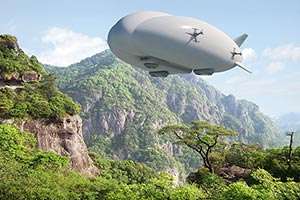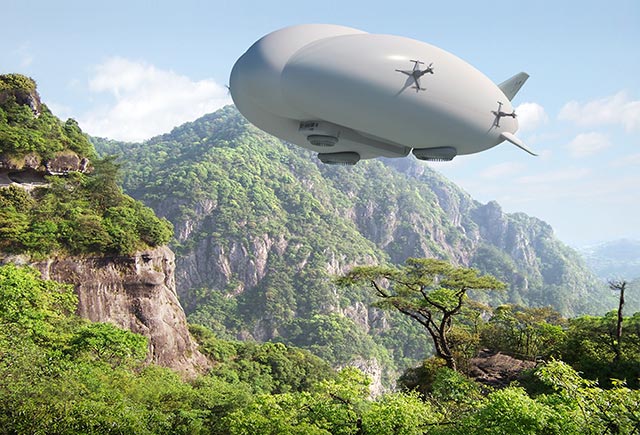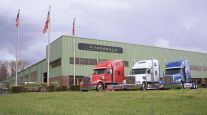Lockheed Wins $480 Million Order for 12 Freight-Hauling Airships

 Lockheed Martin Corp.
Lockheed Martin Corp.Lockheed Martin Corp. won an order for as many as 12 airships worth $480 million as lower crude receipts spur cost-conscious oil and gas companies to consider aircraft able to carry workers and cargo to remote locations without the need for hefty investment in runways and roads.
Deliveries to Straightline Aviation, known as SLA, will begin in 2018 and span about two years, with the U.K. company saying it’s talking with potential users, including Alaskan oil fields that have struggled to secure backing for new ice highways.
“Building huge infrastructure might have been acceptable when oil was at $90 a barrel, but nowadays they need to make economies like the rest of the planet,” SLA CEO Mike Kendrick said in an interview. Solar-energy installations in the Middle East and oil-related operations in Africa, Latin America and Russia are also potential markets, he said.
Lockheed Martin’s LMH-1 airship is designed to carry 20 metric tons of freight and 19 passengers, plus crew. The craft can land without the traditional mast, slashing the cost of ground infrastructure, travels faster than a ship and burns less fuel than conventional aircraft, according to the U.S. company.
Journeys using the heavy-lift helicopters that currently undertake the bulk of airborne cargo trips to remote locations cost seven times as much per ton mile, Kendrick said.
The SLA deal hints at a new age of airship-based transportation, almost 80 years after the Hindenburg disaster brought decades of dirigible development to a halt amid a collapse in public confidence as 36 people died when the world’s biggest blimp was engulfed by flames in New Jersey.
While companies have experimented with airships in recent years, most projects have struggled. The last large-scale effort, Cargolifter AG, collapsed in 2002 after seeking to develop a craft with a 160-ton payload. Its 550,000 cubic-meter (19.4 million cubic-foot) hangar south of Berlin is now used as a tropical amusement park.
The airships being developed by Lockheed Martin and chief competitor Hybrid Air Vehicles Ltd. are a legacy of an abandoned Pentagon project to develop a military blimp to undertake surveillance work in Afghanistan. The HAV model, originally made by Northrop Grumman Corp., was selected for further development before the plan was scrapped.
HAV said March 29 it had opened a new round of funding after exhibiting its Airlander 10 model last week, while SLA might consider an initial public offering, though not in the next 12 months, according to Kendrick. The company will place its LMH-1 order via Hybrid Enterprise, established last year as a vendor for Lockheed Martin airships.
Transport costs represent a likely “sweet-spot” for savings at oil companies, Hybrid Enterprise CEO Rob Binns said in an interview. “They’ve cut headcount, they’ve eliminated projects that were cash-flow negative and every major oil and gas and mining company now has a team that are looking at a way to re-engineer their business,” he said.
Lockheed Martin can turn out one LMH-1 per month, according to Binns, who sees demand for about 500 craft over the next decade. A 90-ton variant could also be developed as early as 2019 if there’s sufficient demand and airships carrying passengers alone will be an option in two or three years, he said.



